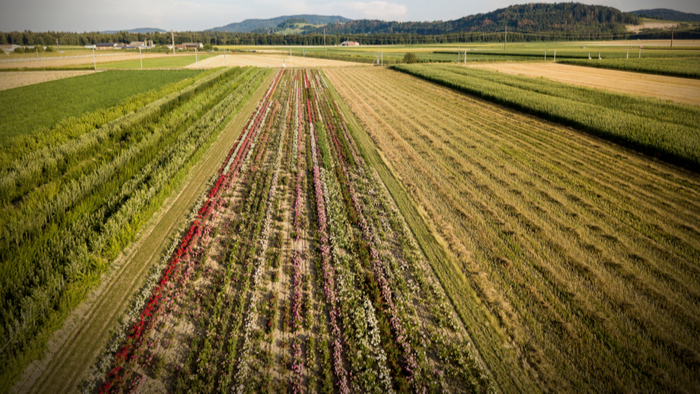Genetic diversity is being lost at an alarming pace, according to a recent study from the American Institute of Biological Sciences (AIBS). But farmers and scientists are working to conserve the genetic diversity of crops to ensure future food systems resilience.
The stability of the global food system depends upon crop genetic diversity. It is “the very foundation of agriculture,” Dr. Nora Castañeda-Álvarez, Project Manager of Seeds for Resilience at The Crop Trust, tells Food Tank.
“Genetic diversity is the variation within species and their populations…[which] helps species to adapt and makes ecosystems more resilient,” Dr. Sean Hoban, co-author of the AIBS report and Tree Conservation Biologist at The Morton Arboretum, tells Food Tank.
Crop diversity is possible thanks “to the past, present and future contribution of farmers in centers of origin and diversity,” writes Stef de Haan, Senior Scientist on Andean Food Systems at The International Potato Center (CIP), in Plant Genetic Resources. But today their role as custodians of genetic diversity is threatened by the pressures of global markets and climate change.
A recent paper in Evolutionary Applications estimates a six percent loss of genetic diversity in wild populations since the industrial revolution began in the mid-1700s. And authors of the AIBS study argue that, while non-governmental organizations (NGOs) are establishing ambitious goals to protect species and ecosystem diversity, targets for genetic diversity conservation are lacking.
The Crop Trust’s Seeds for Resilience project, for example, is hoping to strengthen links between national gene banks and farmers in five countries in sub-Saharan Africa. Gene banks, which freeze and store seeds in collections, help to safeguard crop diversity away from their natural habitats. They “play a key role as backup sites for conservation,” Castañeda-Álvarez tells Food Tank.
By working closely with gene banks, farmers can select varieties of key crops such as sorghum, millet, and cowpea with “traits that help them face climate change and other challenges,” says Castañeda-Álvarez. And farmers can also conserve any unique crop varieties they may have with the seed bank for future resilience.
The five-year project will “allow plant breeders and other scientists to study the diversity held in national gene banks and use it in breeding programs to develop new, improved varieties,” Castañeda-Álvarez tells Food Tank.
